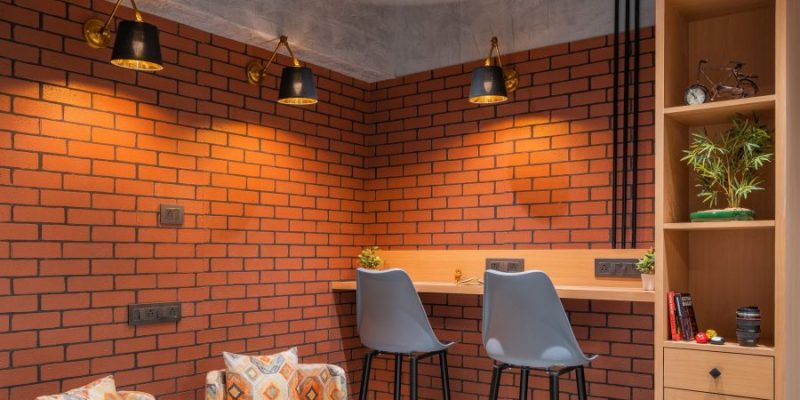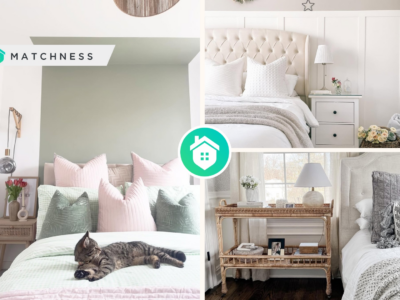Introduction
How can the age-old charm of bricks be perfectly merged with today’s modern design aesthetics? Many homes and establishments seem to miss that nostalgic touch that adds depth and character. However, the solution lies in brick elegance, seamlessly combining the rustic allure of bricks with contemporary design elements.
This integration of ancient and modern is not just a passing trend, but an art form that revives spaces, bestowing upon them a distinct identity. For those seeking to understand how this can reshape an environment, and desiring actionable insights on achieving this aesthetic, the journey begins here.
Continue reading!
Outline
- Rustic Brickwork in Modern Architecture
- Bricks in Contemporary Spaces
- Techniques for Rustic Brick Flair
1. Rustic Brickwork in Modern Architecture
Architecture continues to transform and adapt. In today’s design landscape, there’s a captivating blend of history and modernity. A prime example is the rising prominence of rustic brickwork within current designs. With manufacturers like Tabrick, facilitating this, the fusion of age-old brick elements into modern spaces lends warmth, authenticity, and a captivating visual allure.
The Rustic Appeal
The romance of rustic brickwork lies not just in its warm tones but in the story it seems to tell. For instance, rustic brick, with its imperfections and nuanced character, evokes a sense of timelessness. It feels like each brick has a tale to narrate, of days gone by, of eras it has seen, and of the hands that molded it.
The popularity of the rustic appeal is perhaps a testament to the human need for connection – connection to history, to earthiness, and to authenticity in an increasingly artificial world.
Merging Old-World & Modern
One of the most enchanting architectural trends is the interplay between the traditional and the contemporary. Imagine a minimalist modern home with vast glass surfaces, steel accents, and sharp lines. Now, juxtapose this with a wall or two of rustic bricks. Instantly, the space gains a new dimension. The bricks soften the modern edges, offering a comforting embrace of history.
This merger isn’t just aesthetic; it’s symbolic. It sends a message that while we embrace the advancements and efficiencies of modern life, we haven’t lost touch with our roots. It’s a reminder that progress doesn’t necessitate discarding the past but can often mean integrating it meaningfully.
In commercial settings too, this blend is potent. Think of tech offices with cutting-edge amenities, but with breakout areas or facades adorned with rustic brick patterns. It’s a nod to innovation while staying grounded.
Brickwork as a Highlight
The beauty of rustic brickwork is that it doesn’t need to overpower to make an impression. Even as a singular accent wall, a fireplace backdrop, or an external façade, it can be the highlight of a design.
Architects and interior designers are leveraging this by using rustic bricks in select spaces to draw attention. A minimalist room, for instance, can come alive with one brick wall acting as a focal point. Similarly, in larger structures, a rustic brick entrance can set the tone for the entire edifice.
Moreover, lighting plays a key role in elevating this highlight. By illuminating these bricks, be it with ambient lighting, spotlights, or innovative LEDs, the texture and color variations get accentuated, turning them into living pieces of art.
2. Bricks in Contemporary Spaces
The architectural scene has seen dramatic shifts in material use, design ideologies, and aesthetic preferences over the years. However, certain elements, like bricks, have displayed a resilient ability to evolve and remain relevant.
While traditionally associated with foundational construction and classic design, bricks have metamorphosed into a versatile design element in contemporary spaces. This transformation hinges on both their functional benefits and design potential.
Brick Façade Impressions
First impressions are crucial, and for many buildings, the façade is the first touchpoint. A brick façade, therefore, can set the tone for what lies within.
Welcoming Warmth: Unlike some materials that might come off as cold or impersonal, bricks exude warmth. They can make commercial spaces feel more approachable and inviting.
Architectural Interest: The patterns, textures, and colors of bricks can create visually striking facades. Whether it’s the classic red brick pattern or a more avant-garde design, brick façades can be genuine architectural artworks.
Timelessness: Trends come and go, but bricks have an ageless quality. A brick façade is less likely to appear dated, ensuring the building remains visually appealing for years.
Pairing Brick & Other Materials
While brick alone can be a focal point, its combination with other materials can amplify the rustic flair.
Brick & Wood Combos
The combination of brick and wood is akin to merging the earth and trees, creating a truly organic ambiance.
- Wooden Beams: In spaces with exposed brick walls, introducing wooden beams, especially those with a weathered look or raw finish, can enhance the rustic atmosphere. This is particularly effective in settings like loft apartments or barn conversions.
- Wooden Furniture: Rustic wooden furniture, whether it’s a vintage coffee table or reclaimed wooden shelves, set against a brick backdrop, creates a cozy, timeless environment.
- Wooden Floorings: Dark-toned wooden floors, or even better, reclaimed wood floorings, complement the rawness of brick walls, creating a space that feels warm, lived-in, and full of character.
Metals & Brick Structures
Metal, with its industrial vibe, can complement the rustic nature of bricks in unexpected ways.
- Iron and Steel Frames: Whether it’s large iron-framed windows or steel door frames, the sleekness of metal contrasts beautifully with the roughness of bricks. It’s a combination that evokes images of old warehouses or factories turned into modern living spaces.
- Metallic Fixtures: From wrought iron chandeliers to brushed steel lamps, metallic fixtures can add an industrial touch to a brick-dominated space.
- Exposed Pipework: In spaces like kitchens or bathrooms, instead of hiding pipework, having it exposed, especially if made of copper or brass, can amplify the rustic-industrial aesthetic.
Achieving a rustic brick flair in modern architecture and design requires a blend of the old and the new. It’s about celebrating imperfections, cherishing history, yet making it fit seamlessly into contemporary lifestyles.
3. Techniques for Rustic Brick Flair
The charm of rustic brickwork lies in its inherent rawness, its historical semblance, and its ability to bring an earthy warmth to spaces. In contemporary design, evoking this charm while keeping things modern is an art. Let’s explore various techniques through which one can achieve the rustic brick flair in contemporary settings.
Picking the Right Brick
The foundation of a rustic appearance begins with the type of brick you choose.
- Texture and Finish: Modern manufacturing allows bricks to be produced with a variety of finishes. For a rustic feel, bricks with rough textures, uneven surfaces, or those that mimic the look of reclaimed bricks can be used. These offer a sense of age and weathering even if they are brand new.
- Color Variation: While the traditional red brick is timeless, bricks today come in a range of hues. A mixture of different shades, from deep reds to burnt oranges or even muted browns, can enhance the rustic appearance. The subtle color variations found in a single brick batch can mimic the inconsistencies of older bricks, adding to the authenticity.
- Size and Shape: Older bricks were often inconsistent in size due to the methods of production. Opting for bricks that aren’t perfectly uniform can add to the rustic vibe. Modern manufacturers sometimes offer bricks with these slight variations to cater to this demand.
Modern Brick-Laying Patterns
The intricate dance between bricks and mortar is age-old, but the patterns they form continue to evolve, reflecting changing tastes and design principles. The manner in which these bricks are laid out can dramatically transform spaces, making them whisper tales from ancient times or speak in contemporary tongues. Here’s how three modern brick-laying patterns influence aesthetics.
Stack Bond
The Stack Bond stands out in its simplicity. With bricks laid directly atop one another, aligning both vertically and horizontally, the result is a grid-like pattern on the wall. This geometric consistency provides spaces with a structured and neat appearance that resonates with the minimalist in all of us.
Yet, when combined with rustic bricks, characterized by varied colors and rough textures, an interesting juxtaposition emerges. The linear, modern layout clashes harmoniously with the rustic bricks’ old-world charm, crafting a narrative of old meeting new.
Herringbone
The Herringbone pattern, with its ancient roots, gets a modern makeover in today’s design sphere. Bricks are placed in an alternating diagonal pattern, resulting in a dynamic zigzag design. This pattern, inherently dynamic, makes surfaces appear alive and full of movement.
Though not traditionally a primary choice for entire walls, its use in modern design, especially for floors and feature walls, brings a touch of historical elegance. The pattern echoes memories of old courtyards or vintage interiors, lending contemporary spaces an air of timeless sophistication.
Random Placement
Departing from the norm, the Random Placement technique revels in unpredictability. Instead of following a regular, repeated sequence, it introduces deliberate shifts in the brick layout. Some bricks might protrude more than their neighbors, while others could be rotated to break the monotony.
This randomness can mirror the organic inconsistencies found in ancient structures, where each brick seemed to have a personality of its own. When used strategically, this pattern can make a freshly built wall seem like it has withstood the tests of time, bearing witness to countless sunrises and sunsets.
In essence, the art of brick-laying is much more than mere construction. It’s a design statement, an expression of intent. As architects and designers play with these patterns, they’re not just building walls but crafting stories brick by brick.
The techniques outlined above offer multiple avenues through which designers and homeowners can navigate this delicate balance, creating spaces that resonate with character and modernity simultaneously.
Conclusion
The incorporation of bricks in modern design extends beyond mere style—it’s a narrative. This fusion speaks of history, endurance, and timelessness, while aligning with the refined demands of current architectural trends.
For homeowners aiming to infuse their space with a hint of history, or designers searching for ways to intertwine the past and the present, the elegance of brick in contemporary settings unveils boundless opportunities. In design, with the precise application, bricks can transform any setting, making what’s old feel fresh and what’s new feel enduring. Contact us today to learn more.

















